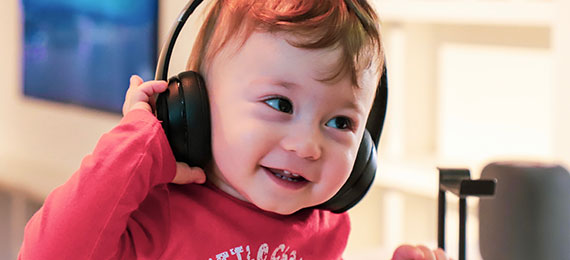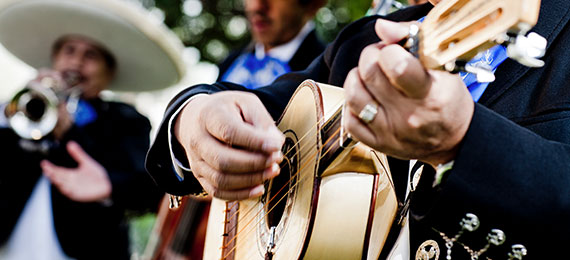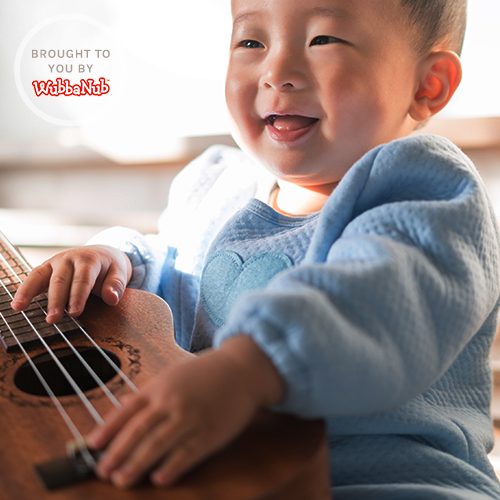It’s World Music Appreciation Day!
Music plays a key (pun intended) role in our lives, often starting before we’re even born! The songs that are sung to us as we fall asleep, the first song you ever slowed danced to (thanks for the memories, Dru Hill), the pump up song you play before a big interview or going out with your friends and the songs that make you think of a certain time, place or person. Music is one of the few things that is truly universal, an art form of beats and melodies that translates even when the words do not. Let’s take a look at the developmental properties of music and then see how it is used around the world.
Music and Language
It’s not surprising that many parents use music to stimulate their newborns, or that children often respond to specific songs even before they are able to speak. The human brain processes music the same way in processes new languages, which makes sense considering each builds upon compositional structure the same way. Here are a few more fun facts about how music and language are related:
- Music and language are processed in the same area of the brain known as Broca’s area. Well, that makes sense!
- People who learn to play an instrument or study music before the age of seven have an easier time learning foreign languages and also tend to retain words quicker.
- Tip: You can take advantage of this by playing music in a different language for your young children, they may not immediately pick up on the new language but the exposure might help them later when they start studying.
Music and Memory
When we’re young music is a way for us to establish connections to facts, because our brains can more easily access the repeated syntax of songs help us remember. It’s part of why we teach kids the “ABC’s” in song, they might not know entirely what the words/letters mean but they are establishing a recall of those facts. Even later in life when our brains have slower memory retrieval, playing familiar songs can jog memory as well as stimulate the part of the brain that processes memory. There are lots of ways to utilize music to help with memory in small children, here are a few ideas:
- Try using familiar tunes when teaching new things. Whether doing tasks around the house or learning a new subject in school, using the melody of easily repeatable songs like “Twinkle, Twinkle Little Star” or “Are You Sleeping?” will not only help children remember better it will also help them process new information more easily because of the way it has been associated with a well-known song.
- Use music to establish a routine. We know kids respond well when their routines are set and music can be a great help prepare them for a change in the day. Not just bedtime songs, but like mentioned above you can establish “cleanup songs” or “play music”. The musical connection will create an association in your child’s brain, making the transition from “fun playtime” to “settle down time” all the easier.
Music Around the World
We all use music in different ways. To celebrate, to exercise, to have a soundtrack to our everyday life. Every culture has it’s own relationship to music, let’s take a look at just a few and see if there’s any you want to incorporate into your own life!
- Mariachi Music – A popular style in Mexican culture, this music alternates 3/4 and 6/8 beats with heavy syncopation. Incorporating violins, trumpets, guitars, a vihuela, and a guitarron this distinctive music usually includes different styles of dance, known as Folklorica, based on the country region.
- Kirtan Music – Not tied directly to a certain location this rhythmic group chanting has its origins in Hinduism. Translated from Sanskrit it means “narrating, reciting, telling, describing” it’s a call-and-respond style of meditation that is popular the world over.
- Apala – Developed in Nigeria by the Yoruba people in the 1930’s. It is entirely percussion-based music that is played to mark the end of fasting during Ramadan. Over the years the music has become more popular and less religious based, incorporating such styles as Cuban percussion.
- Navajo Shoe Game – This game is an extension of Navajo storytelling about how ancient animals created and came to understand the nighttime versus daytime. The story is sung during the beginning of the game, and throughout players use a variety of songs as the different animal characters to distract their opponents.
